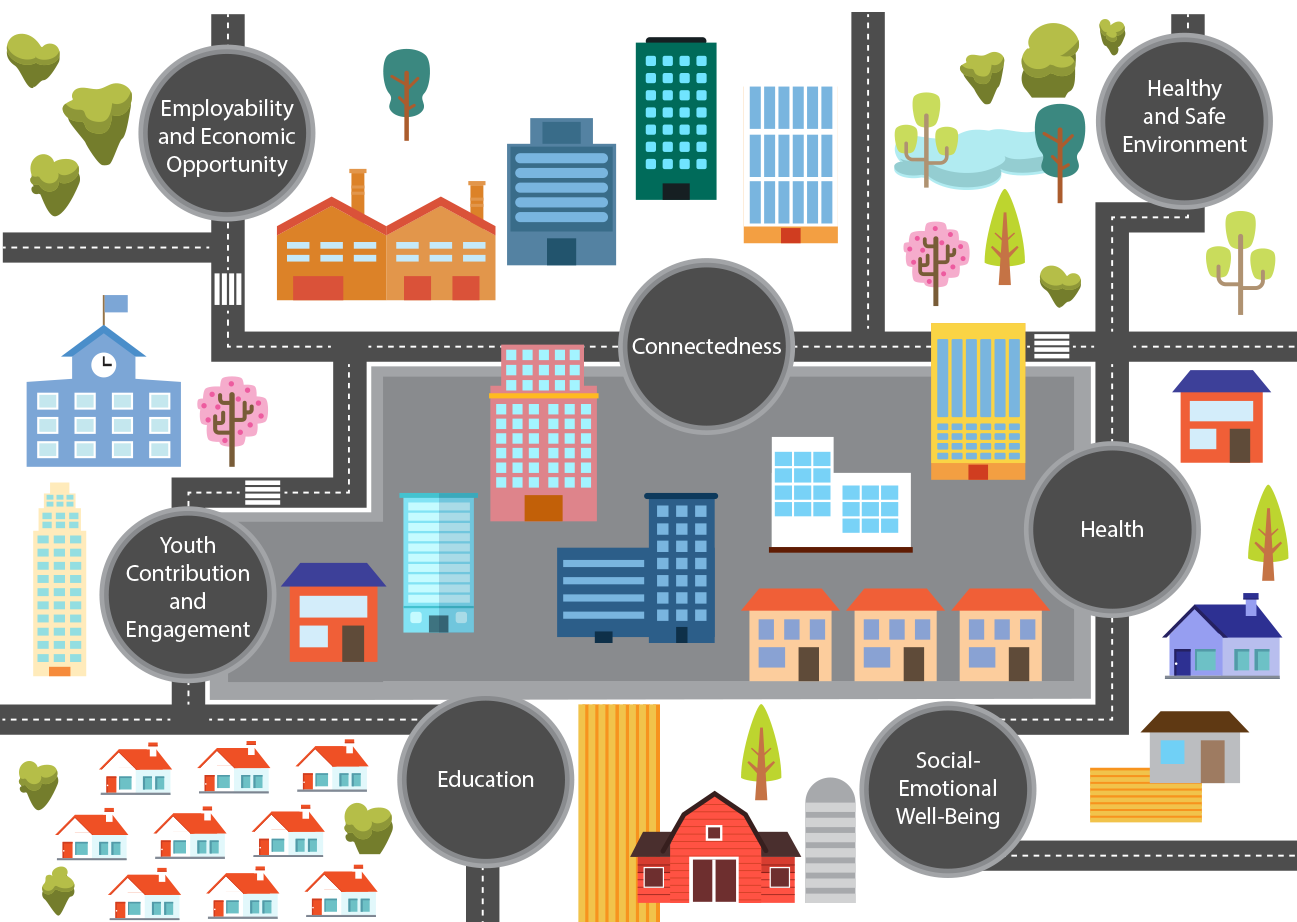Promoting Common Outcomes to Support Collective Action
Promoting Common Outcomes to Support Collective Action
Common Outcomes Framework to Advance Positive Youth Development
Youth have needs that interact across youth-serving sectors. Youth also have the capacity to thrive depending on competencies and supportive conditions across multiple life domains (PDF, 13 pages). For example, mental health is important for employment, and vice versa. Youth's lives are not siloed, which highlights the importance of interagency collaboration. An aspect of interagency collaboration is sharing of common goals and outcomes.
The Working Group’s common outcomes go across seven broad domains and are congruent with positive youth development in several ways. First, the common outcomes framework includes indicators focused on increasing developmental assets across youths’ ecology, including internal assets (e.g., increased self-efficacy), relational or social assets (e.g., increased positive relationships with peers and adults), and environmental assets (e.g., increased healthy school climate). Second, the common outcomes framework includes a whole domain focused on increasing youth contribution (e.g., increased youth leadership opportunities). Third, the framework focuses on reduced risk behavior (e.g., decreased substance abuse, screen time, risky sexual behavior). Fourth, the Working Group’s common outcomes framework focuses on reduced negative consequences of risk behavior (e.g., reduced rates of youth delinquency, offending, and involvement in the justice system). Fifth, the framework focuses on increasing longer-term positive development outcomes (e.g., increased educational attainment, increased youth employment in appropriate positions).
Domains
Click on the boxes below to learn more about each domain and related indicators.
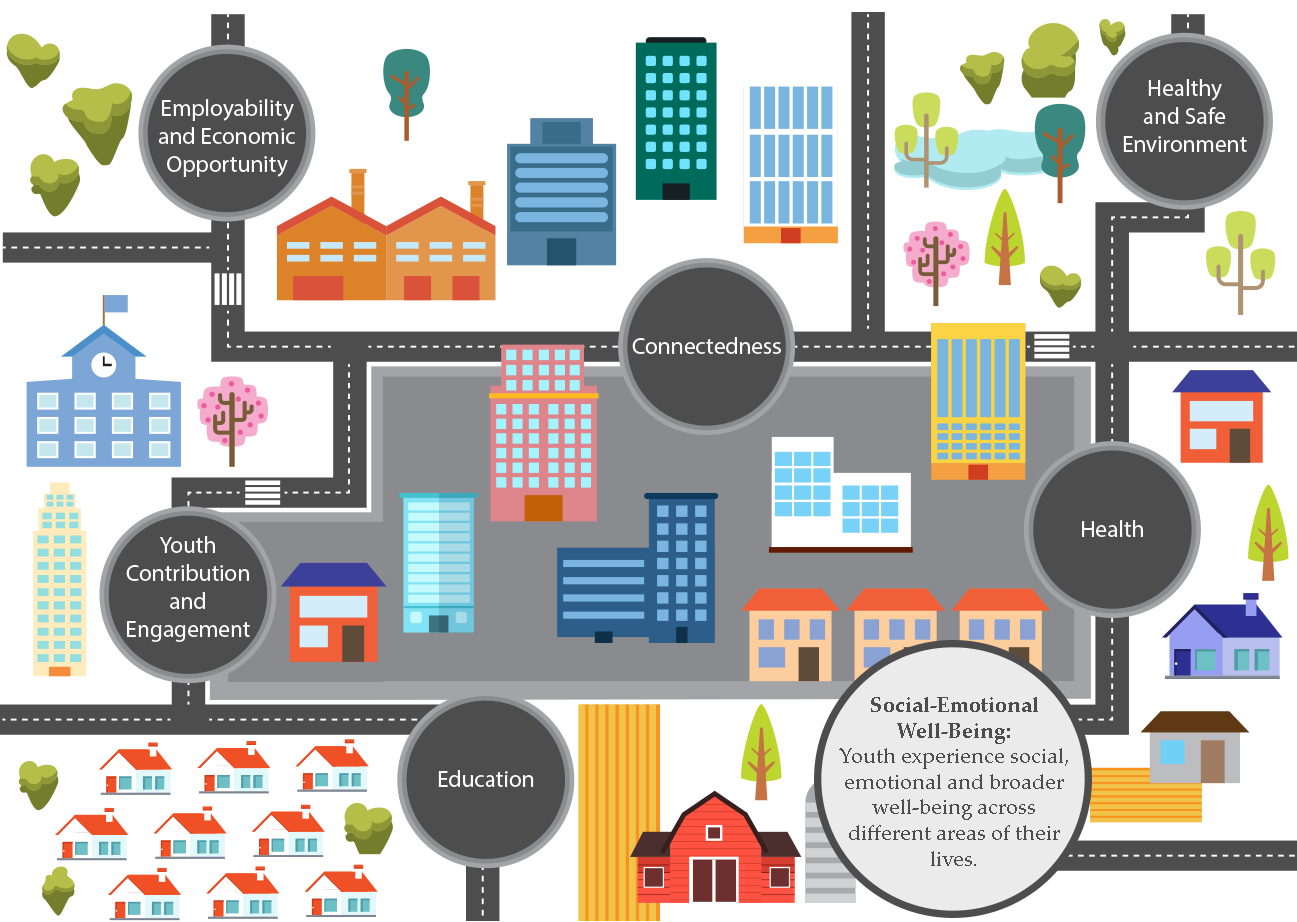
Indicators for this Domain
- Increased self-efficacy (e.g., independence and control over one’s life, self-regulation, decision-making, goal-directed behavior)
- Reduced Adverse Childhood Events (e.g., physical and emotional neglect) and Adverse Community Events (e.g., community disruption)
- Reduced psychological stress
- Increased psychological and emotional safety (e.g., perceived tolerance for positive risk taking, expectation that behavior will lead to supportive and consistent consequences)
- Increased opportunities for youth to explore and express their personal identities and roles
- Increased well-being (e.g., hope, optimism, resilience)
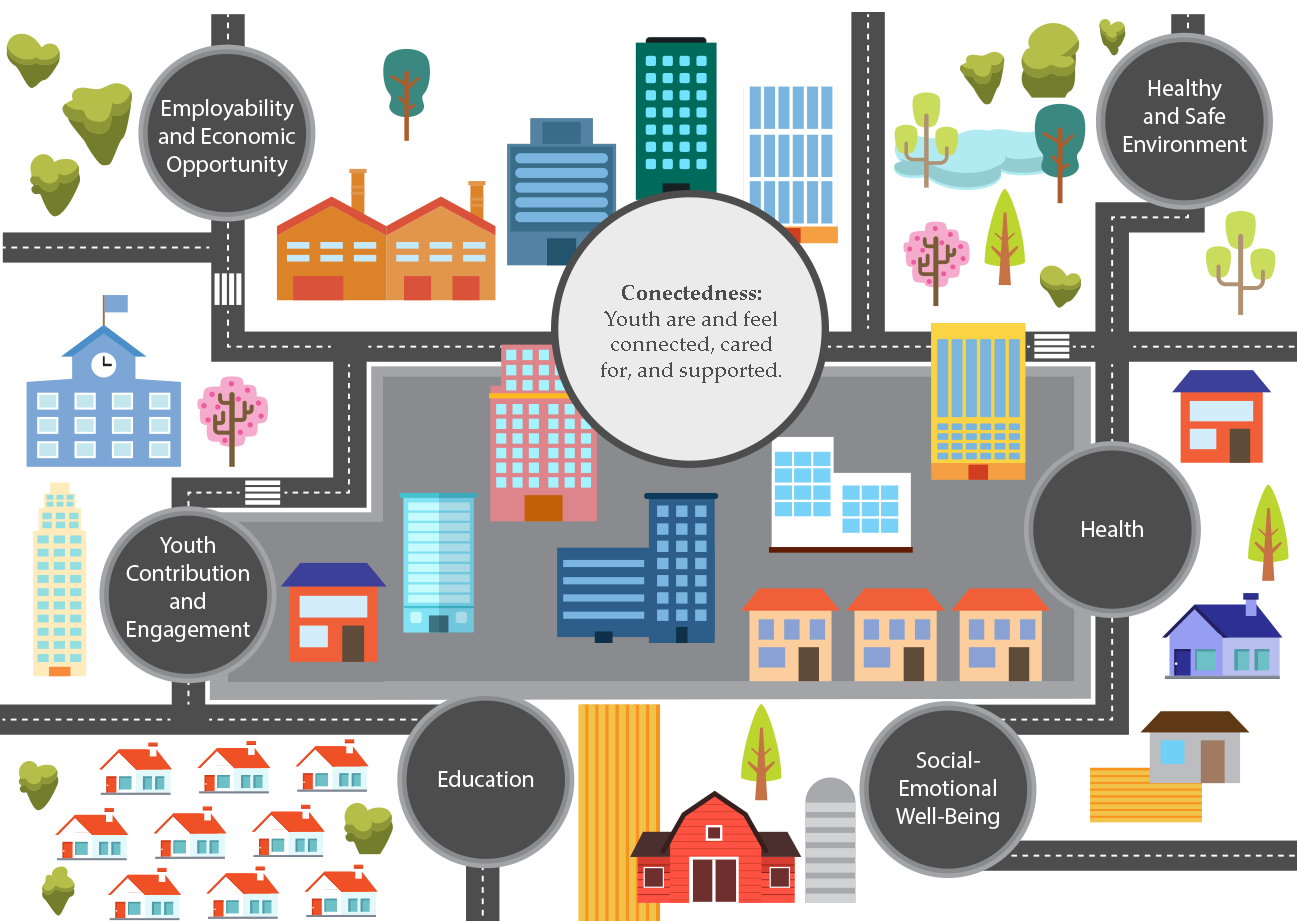
Indicators for this Domain
- Increased sense of belonging
- Increased positive relationships with peers and adults
- Increased family connections/support
- Increased permanent connections
- Increased youth and parental engagement with schools and other youth-serving organizations
- Increased social contribution
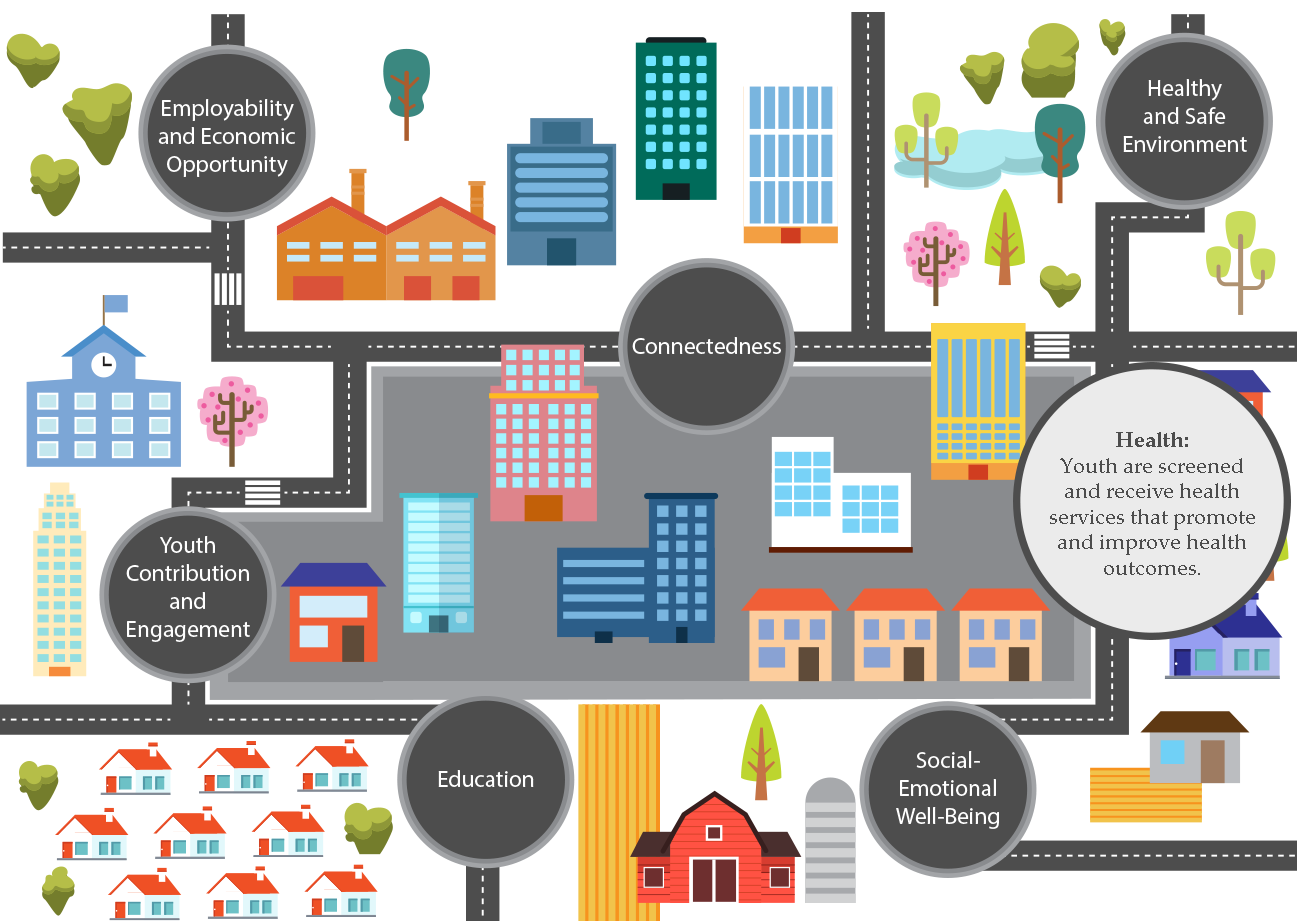
Indicators for this Domain
- Youth are screened and receive health services that promote and improve health outcomes
- Increased health-related protective factors (e.g., physical activity, healthy diet)
- Reduced risk behaviors (e.g., substance abuse, screen time, risky sexual behavior)
- Increased access to physical health treatment services including via Federally-Qualified Health Centers, telehealth options, school-based health services, Medicaid programs, family health insurance plans, etc.
- Increased access to mental health and substance abuse treatment services (e.g., via school mental health services, integration of behavioral health services into pediatric care, recovery programs, trauma-informed care, continuum of evidence-based promotion, prevention, and treatment practices)
- Reduced hospitalizations and emergency room visits (all-cause, injury-specific, etc.)
- Reduced mental health problems/symptoms and substance abuse
- Reduced physical health problems
- Reduced fatalities
- Reduced health-related disparities (e.g., in access to care, health outcomes) or increased health equity
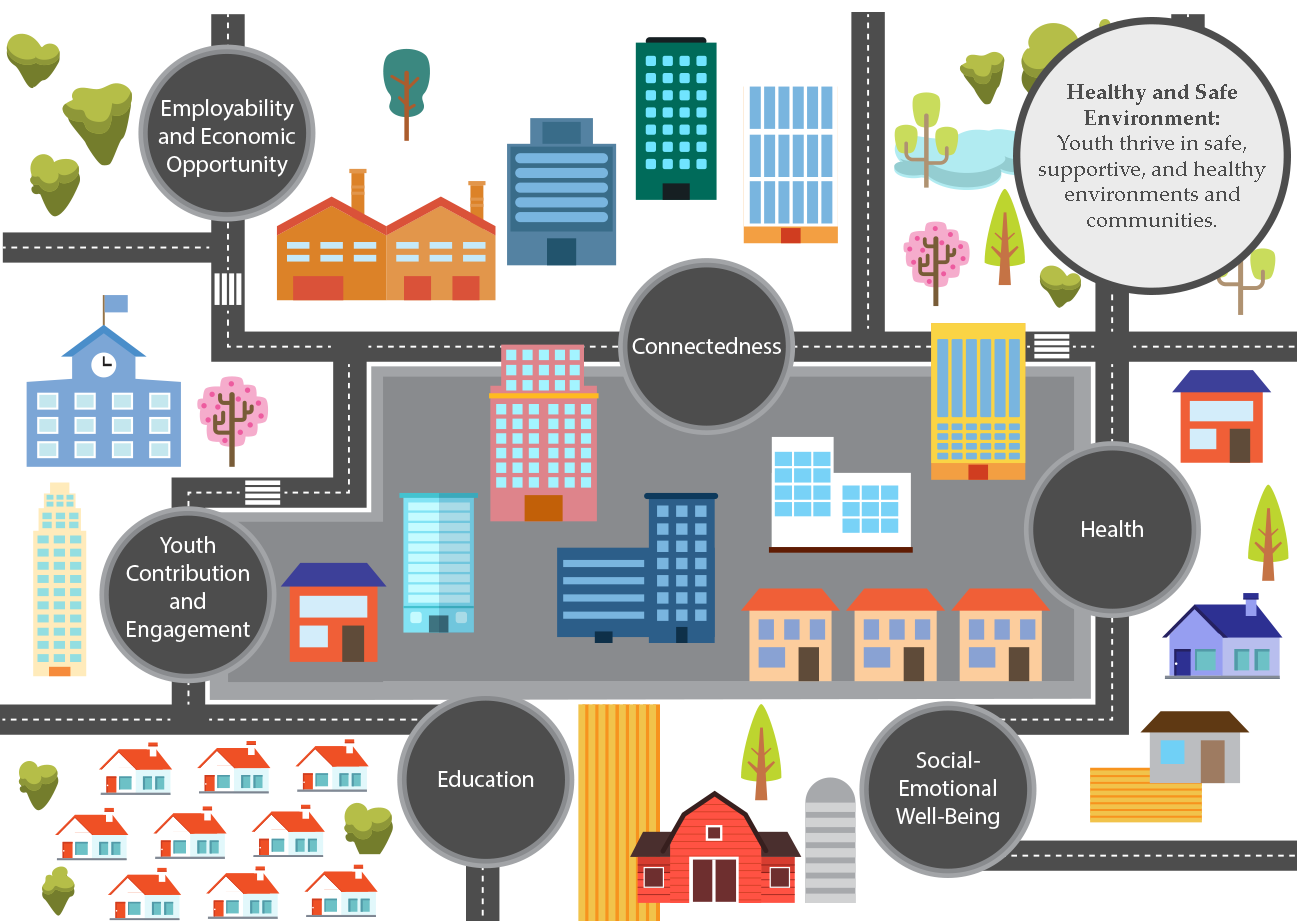
Indicators for this Domain
- Youth thrive in safe, supportive, and healthy environments and communities
- Increased access to health-promoting places in the community (e.g., afterschool programs, recreation facilities)
- Increased healthy school climate
- Reduced exposure to violence (e.g., bullying and cyberbullying; trafficking)
- Increased safety in communities, including the physical environment (e.g., in parks, public transportation) and the social environment (e.g., safe and supportive peers and adults)
- Reduced rates of youth delinquency, offending, and involvement in the justice system
- Decreased youth homelessness and increased connections with safe and stable housing to prevent homelessness
- Increased norms and climates that promote shared perceptions of risks (e.g., risks associated with substance use and misuse)
- Increased support for underrepresented youth
- Increased cultural and linguistic competency in youth settings
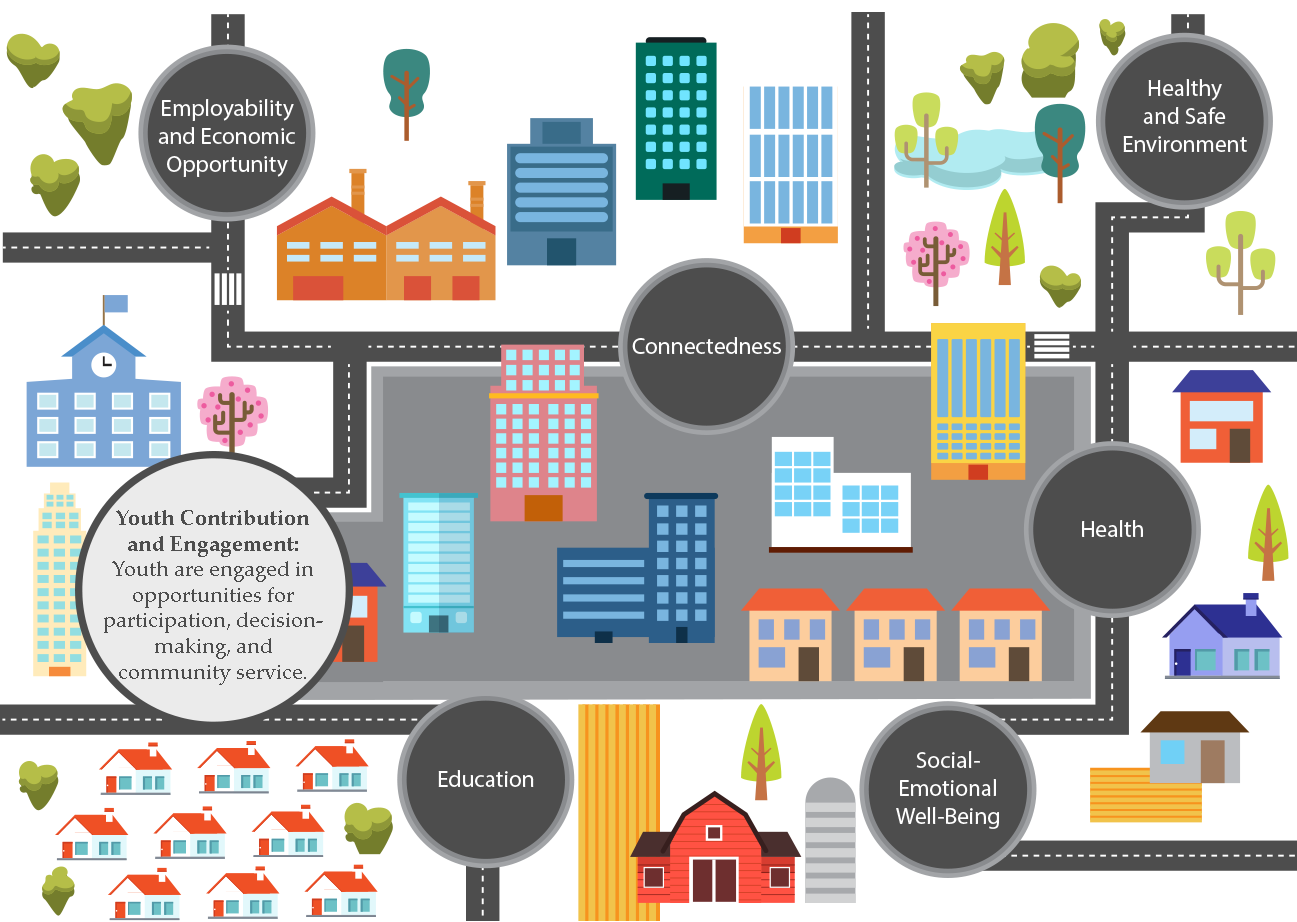
Indicators for this Domain
- Youth are engaged in opportunities for participation, decision-making, and community service
- Increased supports for youth contribution and civic engagement (e.g., adult volunteers to support youth events, civic engagement)
- Increased input into youth-friendly policies and programs (e.g., contributing to program materials, language in Requests for Proposals) and participating in program evaluation activities.
- Increased inclusion of youth voice and leadership in programs
- Increased youth participation in advocacy, peer support, mentorship, volunteering, youth-focused clubs, service for a larger cause, the electoral process, etc.
- Increased youth leadership opportunities (e.g., youth are employed in leadership roles within government sectors)
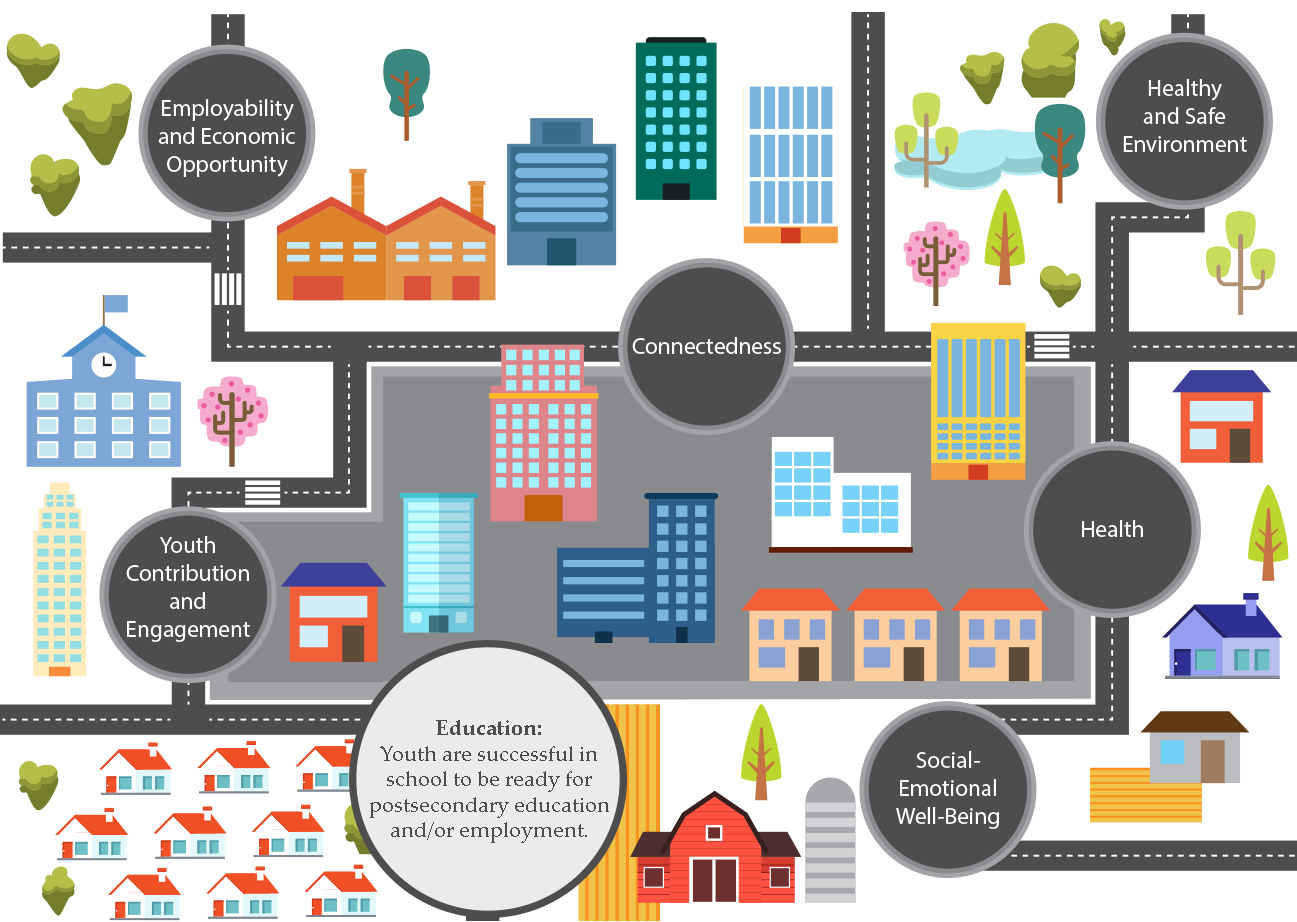
Indicators for this Domain
- Youth are successful in school to be ready for postsecondary education and/or employment
- Improved access to a well-rounded education including enrollment in science, technology, engineering, arts, and mathematics courses, and literacy-related opportunities
- Increased access to curricula that promote the development of creativity, critical thinking, communication, and collaboration
- Increased educational motivation
- Increased access to books and other literacy-related opportunities
- Increased school attendance and retention
- Decreased school dropout and truancy
- Increased educational attainment (e.g., high school graduation, credential and post-secondary attainment)
- Reduced education-related disparities (e.g., in disciplinary events, educational attainment)
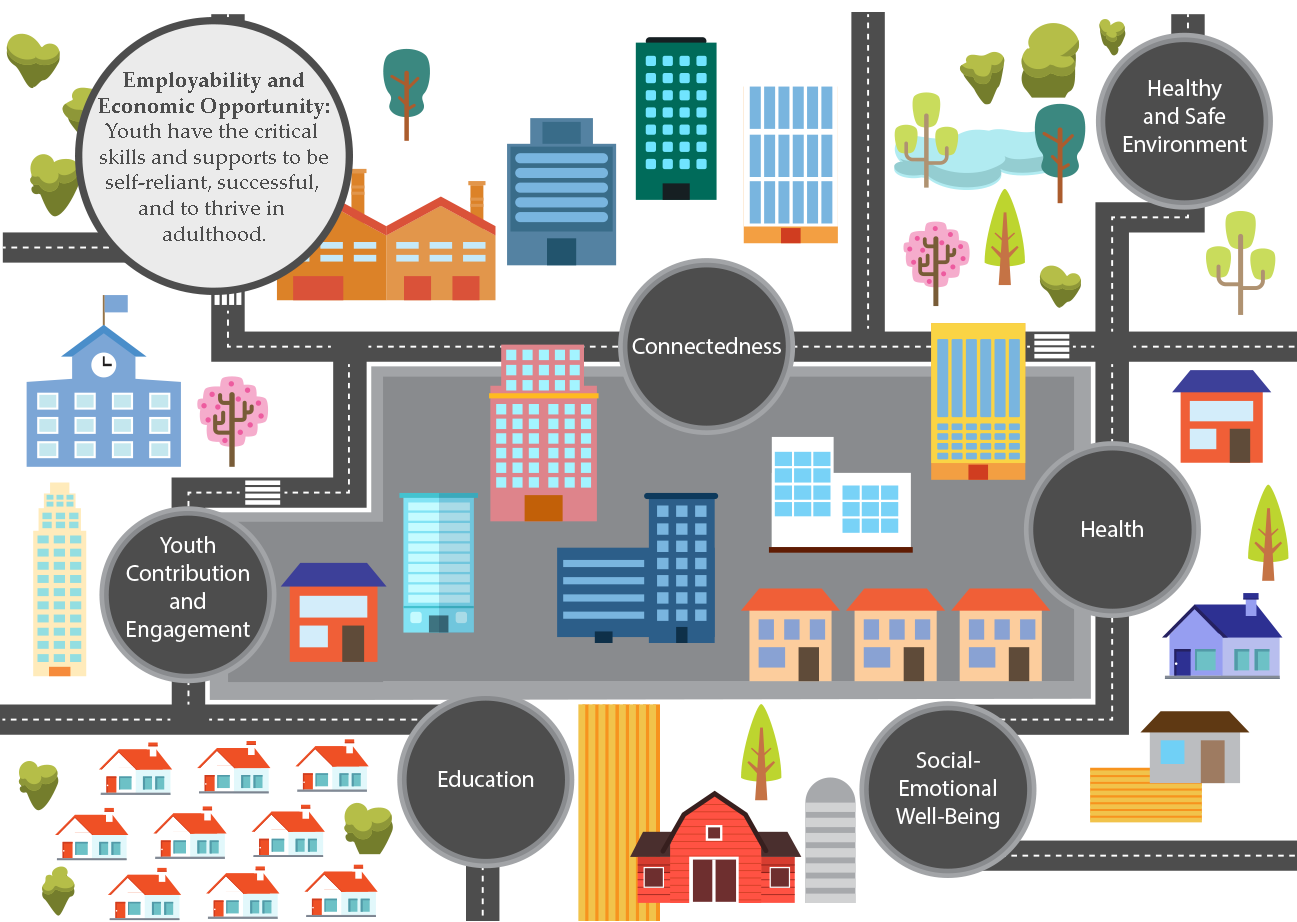
Indicators for this Domain
- Increased occupational skills including 21st century skill and employability
- Increased life skills including how to balance work/college/ family responsibilities
- Increased financial capability and literacy skills
- Increased pathways to youth employability including apprenticeships, internships, and entrepreneurship
- Improved Self-sufficiency including income
- Increased youth employment in appropriate positions including after-school jobs, and post-graduation entry into the workforce
